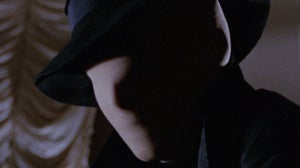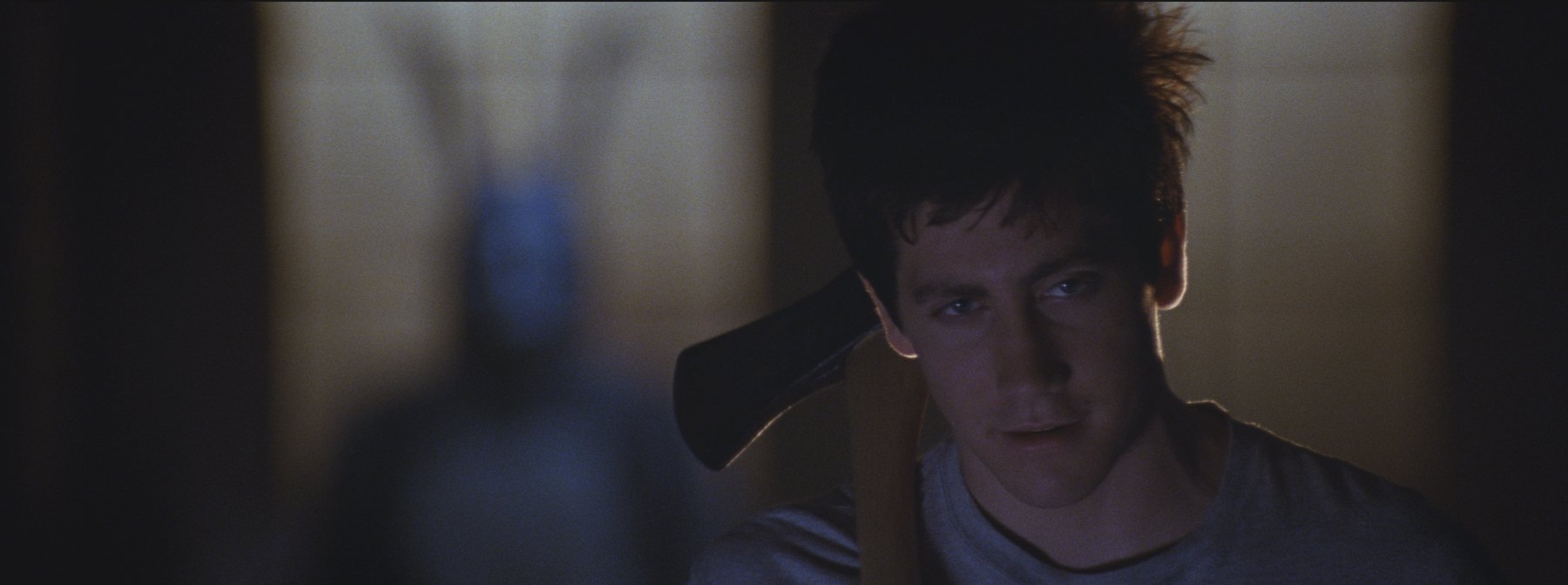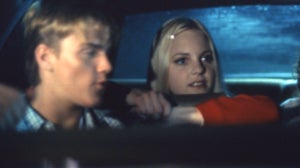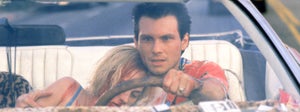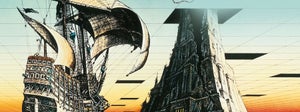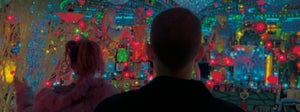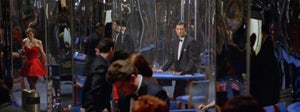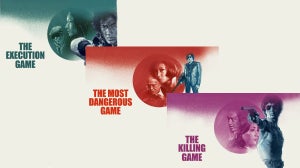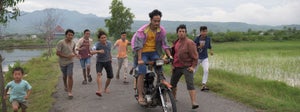
It’s that time of year again, so what better way to celebrate this season of ovoid chocolate gluttony than by settling in front of the TV with some of your favourite Easter movies? So, unbuckle those trousers and unwrap another fun-size Mars Bar as we offer up suicidal teens, alien death eggs, grumpy gangsters and a leather-faced cannibal…
Donnie Darko (2001)
From the mind of then newbie talent Richard Kelly comes a chocolate covered gift of an Easter treat. Well, not really, as the movie is definitely set during the Halloween holidays, but this blackly comic, sci-fi, coming of age horror piece, certainly provides us with more than a few nods to that eggs and bunnies spring festival. Not only is Frank, a nightmarish embodiment of one the key motifs of the season, being an emo-inspired costumed rabbit with a creepy voice to boot, but the film is littered with sarcastic critiques on all those American-dream-spouting, ‘responsible’ hypocrites, it also, in a much less cynical manner explores what it is to be a family, stripped of any idea of enforced values. Jake Gyllenhaal kills as the titular character, ensuring his place in the Hollywood echelons but also showing us his spectacular ability to bring a genuine misfit to the screen in an all too real fashion.
https://www.youtube.com/watch?v=bKQ2wggG-C4
Mallrats (1995)
It’s probably fair to say that slacker-loving film bod Kevin Smith, was essentially at his best and most relevant during the early to mid-90s, when he was pretty much a slacker himself. And if that’s the case, it’s worth pointing out that Mallrats is undoubtedly his most fun film from that decade. Though not as idiosyncratic as Chasing Amy (1997) or as cleverly subversive as Dogma (1999), it does pack powerful (if not so subtle) comedic punch and eagerly extends Smith’s View Askew universe incorporating key characters like Jay and Silent Bob which he had first established in his soulfully groovy debut Clerks (1992). But if that doesn’t put you in the holiday spirit, perhaps watching Jason Lee get into a scrap with the Easter bunny or offering Merle from The Walking Dead some arse-smeared choccies will.
https://www.youtube.com/watch?v=XpshU8YDYjw
Contamination (1980)
Having already taken on the Italian living dead, first in Lucio Fulci’s impeccable Zombie Flesh Eaters (1979) then in inferior copy Zombie Holocaust (1980), British thesp Ian McCulloch soon found himself at odds with unwelcome extra-terrestrials. Luigi Cozzi’s thinly-veiled Alien (1979) rip-off brings a distinctly Mediterranean exploitation vibe to the genre, to chime in with the rapidly evolving existential threat of the video nasty. Daft, messy and much more fun than it has any right to be, it is of course stuffed to the brim with all the seasonal eggs you’ll ever need, just don’t try cracking these with the back of your spoon.
https://www.youtube.com/watch?v=YU3wVX8wPRY
The Long Good Friday (1980)
Does any movie re-inforce the rainy dread of an upcoming bank holiday better than The Long Good Friday (1980)? If Mike Hodges’ Get Carter (1971) had grimly captured small-town England’s awkward cross over from one decade to the next, presenting a post-60s world where most were still struggling to exist outside of the 50s, then John Mackenzie’s tale of urbanisation, terrorism and old school gangland horror, is a perfect reflection of the dawning Thatcher era. Brash, brutal and not afraid to shout its politics to dole queues and tenements of a broken country, it explores England’s confused sense of national pride and its crumbing old world view. Harold Shand, (Bob Hoskins) presents us with a frighteningly real little-Englander and east-end bully, who’s own lust for international power blinds him to the growing threat of the IRA.
https://www.youtube.com/watch?v=B90zNzyFk-w
Night of the Lepus (1972)
What’s surprising about Night of the Lepus is not so much that the producers chose to feature rabbits as monsters, (not an easy task at the best of times), it’s that they chose to include this animal when far more efficient killers were still up for grabs. Jaws (1975) was still a few years away, as was Piranha (1978) and Grizzly (1976), so why anyone would want to adapt Russell Braddon’s comic satire The Year of the Angry Rabbit as a straight-up horror is anyone’s guess. But adapt they did, and William F Claxton’s movie remains a somewhat confusing piece of Easter-ish cult silliness. Perhaps cashing in on the success of the slightly earlier Willard (1971), a much more conventionally scary film about killer rats, they really haven’t thought this through, the rabbits often availing themselves as nothing more frightening than fluff-covered eyes in the dark. Unquestionably good fun though. Definitely one that deserves a late-night revisit, you can bet your buck teeth on that.
https://www.youtube.com/watch?v=m0DKTM41r1s
Watership Down (1978)
Good grief, what was it about teachers in the 70s and 80s? Why did they think it was their job to expose their pupils to as much trauma as possible? Let’s get one thing clear, Watership Down (1978) is not a kids’ film. It is an extremely good film but so is Threads (1985) and I still haven’t recovered from being forced to watch that either. Ditto When the Wind Blows. Based on the Richard Adams book of the same name, Martin Rosen’s animated feature leans heavily into themes of death and environmental ruin, placing it way outside the framework of your average children’s Pixar feature. Bloody, violent and poignant. The whole thing comes wrapped in Mike Batt’s chillingly depressing theme song Bright Eyes, voiced by that well-known funster Art Garfunkel. “There's a high wind in the trees/A cold sound in the air/And nobody ever knows when you go/And where do you start/Oh, into the dark”. Happy Easter kids.
https://www.youtube.com/watch?v=9S26LA8Bk14
The Texas Chain Saw Massacre (1974)
Fancy a night bit of roast lamb on Easter Sunday? Tough, the slaughterhouse closed years ago and there’s a different kind of meat of the menu. Just don’t go asking what it is. Grandpa wouldn’t like that. Tobe Hooper’s seminal piece of slasher social commentary, still manages to create a sense of morbid fear that is hard to replicate. Though there is much to be said for the overtly satirical follow-up The Texas Chain Saw Massacre 2 (1986) many subsequent rehashes and remakes have largely failed to recapture the original’s sickly power. With much to say about isolated communities, and dried-up work forces, using abattoir imagery to illustrate the way in which society animalises its disenchanted and disaffected, it also includes moments of (largely bloodless) horror which have yet to be bettered, even in today’s CGI ‘can do anything’ climate.
https://www.youtube.com/watch?v=BKn9QIaMgtQ
Coherence (2013)
While many science fiction movies have taken us to the outer limits of the galaxy, back in time or to some far flung dystopian society, few have been able to fully explore the nightmarish potential of a civilised dinner party. Not since Douglas Adams offered up The Restaurant at the Universe has informal dining felt so surreal and chilling. Though there is nary a UFO or alien being in sight, the full force of the bizarre extra-terrestrial take-over is unveiled terrifyingly using lights, hearsay and growing sense of mistrust and panic. Utilising ad-libbed material and improvised dialogue, the actors carve out a unique sense of dismay as their situation becomes less clear as the plot moves on. Horrifying, disconcerting and wonderfully playful.
https://www.youtube.com/watch?v=kxAOewNzz-8

Related Articles
